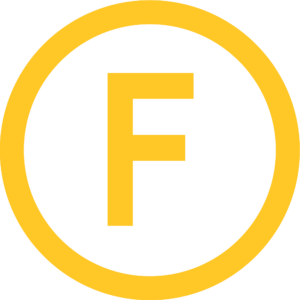Product designers in 2026 continue to sit at the intersection of art, technology, and user psychology. With the global tech ecosystem shifting toward immersive interfaces, SaaS automation, and AI-driven user journeys, the Bureau of Labor Statistics projects ongoing demand for creative-technical talent. According to the latest BLS outlook, overall design employment is expected to grow by about 3% between 2023 and 2033, creating more than 8,500 annual openings. Specialized digital product design—especially in gaming, fintech, and SaaS—will rise faster, between 5% and 7%, as businesses compete on usability and user retention. (BLS.gov)
Across the United States, mid-level product designers (3–5 years) earn between $95,000 and $120,000 per year ($7,917–$10,000 per month), while bonuses range $5,000–$15,000 per year. In Europe, Eurostat data suggests typical pay between €60,000 and €80,000 ($65,400–$87,200), with UK ranges of £50,000–£70,000 ($65,000–$91,000). Designers in gaming command 10–15% higher pay than SaaS designers because of advanced 3D and interface complexity.
Gaming Industry Product Designer Salaries
The gaming design ecosystem is projected to hit $184 billion globally by 2026 (Newzoo 2025). With studios investing in extended reality (XR), dynamic lighting, and cross-platform interfaces, the competition for top UI/UX talent has intensified.
- U.S. Gaming: Entry $70,000–$90,000 ($5,833–$7,500 monthly) + bonus ≈ $3,000. Mid-level $110,000–$140,000 ($9,167–$11,667 monthly) + bonus ≈ $10,000. Senior $150,000–$180,000 ($12,500–$15,000 monthly) + bonus ≈ $15,000.
Example: Unity (San Francisco) pays ≈ $125,000 base + $12,000 bonus = $137,000 ($11,417 monthly). - EU Gaming: Entry €45,000–€60,000 + bonus ≈ €2,500. Mid €70,000–€90,000 + bonus ≈ €7,000. Senior €95,000–€120,000 + bonus ≈ €10,000.
Example: Epic Games Berlin offers €85,000 + €8,000 bonus = €93,000 ($101,370, €7,750 monthly).* - UK Gaming: Entry £40,000–£55,000 + bonus ≈ £2,000. Mid £60,000–£75,000 + bonus ≈ £5,000. Senior £80,000–£100,000 + bonus ≈ £8,000.
Example: Rockstar Games Edinburgh pays £70,000 + £6,000 bonus = £76,000 ($98,800).*
Gaming design demands deep creative insight, agile prototyping, and cross-disciplinary collaboration, explaining consistent $10,000–$15,000 annual pay premiums compared to generic design roles.
Emerging Roles in the Gaming Design Market
As 2026 approaches, the gaming industry is expanding beyond traditional consoles and mobile devices into Web3, metaverse, and cloud-based ecosystems. This shift is generating new roles like Interaction Designers, Narrative UX Architects, and 3D Environment Designers—positions blending storytelling with data-driven UI. According to BLS Occupational Outlook, interactive design jobs are expected to rise 5–8% annually in tech-heavy states like California and Washington. These hybrid roles command salaries between $120,000 and $160,000, often higher than standard UI/UX positions. Europe mirrors this trend, with Berlin, Amsterdam, and Stockholm emerging as hubs for AR/VR game design, offering €90,000–€120,000 salaries. UK-based studios are integrating cinematic storytelling, raising pay to £85,000–£105,000. The rise of generative AI tools such as Unreal Engine Metahuman and Unity Muse is further pushing compensation upward as designers take on partial technical-director roles.
SaaS Industry Product Designer Salaries
In SaaS, product designers must merge UI precision with user data insights and product-led growth metrics. Gartner predicts the global SaaS sector will surpass $307 billion by 2026, boosting recruitment for product and UX specialists.
- U.S. SaaS: Entry $65,000–$85,000 ($5,417–$7,083 monthly) + bonus ≈ $3,000. Mid $105,000–$130,000 ($8,750–$10,833 monthly) + bonus ≈ $8,000. Senior $140,000–$170,000 ($11,667–$14,167 monthly) + bonus ≈ $12,000.
Example: Salesforce (San Francisco) pays $115,000 + $9,000 bonus = $124,000 ($10,333 monthly).* - EU SaaS: Entry €40,000–€55,000 + bonus ≈ €2,000. Mid €65,000–€80,000 + bonus ≈ €5,000. Senior €85,000–€110,000 + bonus ≈ €8,000.
Example: SAP (Germany) offers €75,000 + €6,000 bonus = €81,000 ($88,350, €6,750 monthly).* - UK SaaS: Entry £35,000–£50,000 + bonus ≈ £2,000. Mid £55,000–£70,000 + bonus ≈ £4,000. Senior £75,000–£95,000 + bonus ≈ £6,000.
Example: Salesforce London pays £70,000 + £5,000 bonus = £75,000 ($97,500, £6,250 monthly).*
SaaS roles emphasize analytical design skills, resulting in 5–10% pay boosts for professionals fluent in A/B testing, Figma automation, or cross-platform accessibility.
The SaaS sector’s design evolution now leans heavily on AI-assisted prototyping and real-time collaborative analytics. Product designers integrating these innovations—like AI usability testing and accessibility audits—are in higher demand than traditional wireframe designers. Gartner’s 2026 talent projection shows a 12% premium for AI-integrated UX skills, while EU Commission’s Digital Economy Report notes rising cross-border recruitment across Europe’s SaaS ecosystem. Cloud-first startups in Paris, Dublin, and Helsinki are offering hybrid roles that merge product analytics with experience strategy—pushing salaries to €90,000–€115,000 ($98,000–$126,000) for senior-level designers who demonstrate measurable growth conversion. This convergence of AI design systems and user research represents the next major compensation driver for SaaS professionals.
Remote Work and Freelance Product Designers
Remote work remains a structural shift since 2020, and by 2026, roughly 48% of product designers operate hybrid or fully remote (source: U.S. Labor Review 2025). Freelancers command high hourly rates:
- U.S. Remote Designers: $55–$90/hour (≈ $110,000–$140,000 annualized).
- UK Freelancers: £35–£60/hour (≈ £70,000–£120,000 annualized).
- EU Contractors: €45–€75/hour (≈ €90,000–€140,000 annualized).
Clients pay premiums for turnaround speed and niche experience—especially AI-based prototyping and design systems documentation. The downside remains irregular project flow, but established freelancers often out-earn their salaried counterparts by 10–25% annually.
Salary by Experience and Location
Experience adds 20–30% to income: Entry $65k–$85k, Mid $105k–$130k, Senior $140k–$170k. Regional premiums lift salaries further—West Coast (+15%), London (+20%), and Berlin (+10%). Median U.S. graphic design income stands at $61,300 (2024), highlighting the career growth gap between general design and product-focused roles. (BLS.gov)
Total Compensation, Visa Sponsorship, and Benefits
Bonuses (5–10%) and benefits ($10k–$15k value) elevate total pay substantially. After taxes, U.S. designers retain $6k–$9k/month net; EU designers €3.5k–€5.5k; UK £3.5k–£5.5k.
Visa routes for foreign professionals:
- U.S. H-1B Visa (>$60k threshold) – USCIS.gov
- EU Blue Card (€45,300 minimum) – ec.europa.eu
- UK Skilled Worker Visa (£38,700 minimum) – gov.uk
Tips to Maximize Your 2026 Pay
- Earn a Google UX Design Certificate (+$5k–$10k yearly).
- Build portfolios on Behance/Dribbble with A/B metrics.
- Master Figma automation, AI plug-ins, and UX writing.
- Target gaming or SaaS sub-sectors for 10–15% premiums.
- Negotiate flexible work + performance bonuses.
Another effective earning strategy is maintaining visibility through professional associations and accredited communities. Memberships with bodies like the Interaction Design Foundation (IDF) or UXPA International provide not just credibility but also networking leverage for cross-border contracts. Continuous education—through certifications like Adobe XD Professional or Google UX Advanced—can add another $7,000–$12,000 annually to total pay. Finally, positioning yourself in emerging markets like healthcare UX or fintech SaaS, where regulatory design compliance is critical, can yield up to 20% higher median compensation than generic product design roles.
Global Product Design Salary Summary (Data Snapshot 2026)
| Region | Entry | Mid | Senior | Annual Bonus | Growth Rate |
| U.S. (Gaming/SaaS) | $65k–$90k | $105k–$130k | $140k–$170k | 5–10% | 3–7% |
| EU (Avg) | €40k–€60k | €65k–€85k | €85k–€110k | 5–10% | 4–6% |
| UK (Avg) | £35k–£55k | £55k–£75k | £75k–£100k | 5–10% | 3–5% |






